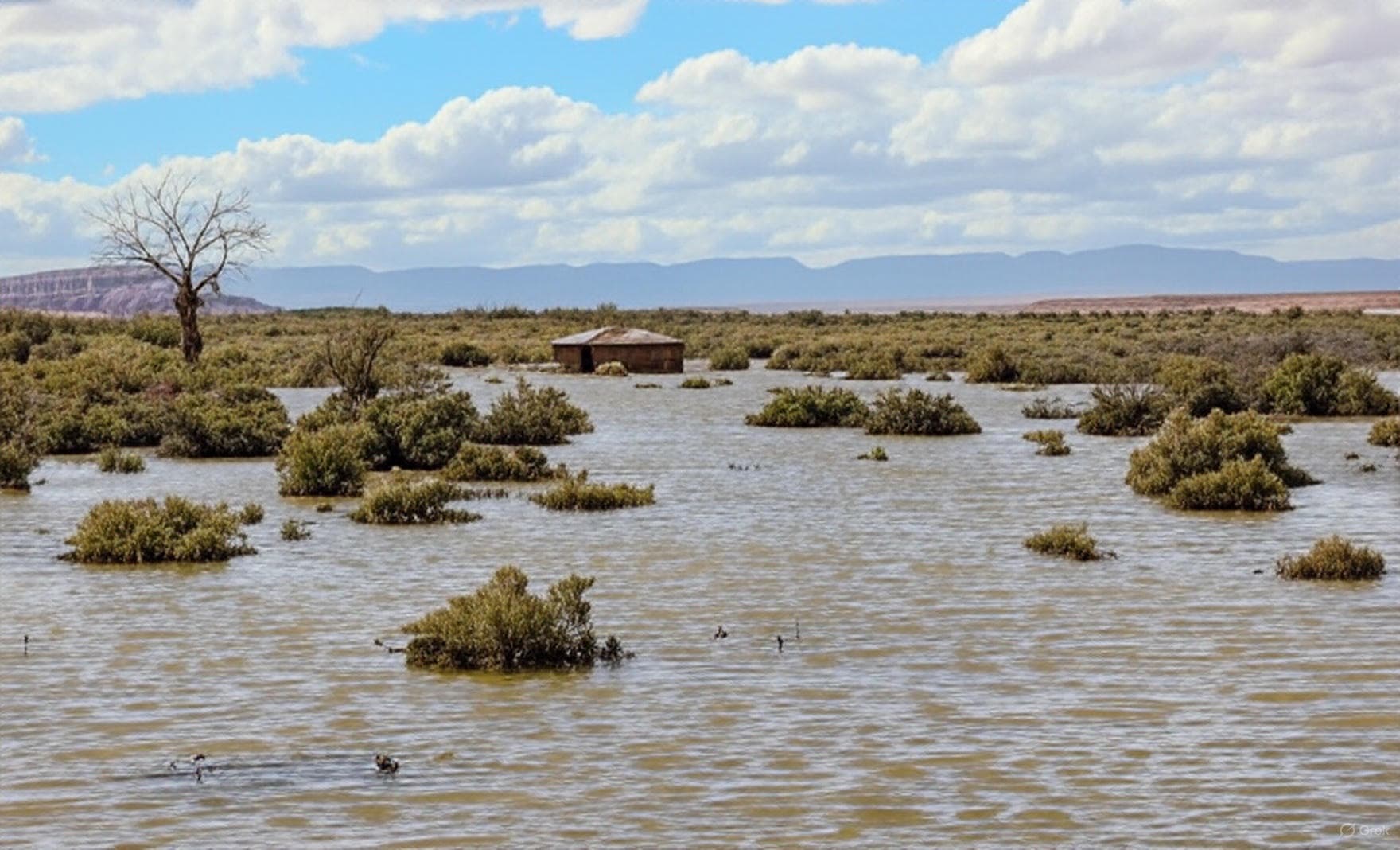Flooding from Hurricane Priscilla Remnants Strands Navajo Families, Raises Concerns in McKinley County
Heavy rains from the remnants of Hurricane Priscilla between October 10 and 12, 2025 caused dam failures, road washouts and flooded homes across several Navajo Nation chapters in Arizona, isolating residents and disrupting services. Though the immediate impacts are in Arizona, strong cross-border family, cultural and economic ties mean McKinley County communities face potential spillover effects and shared recovery demands.
AI Journalist: James Thompson
International correspondent tracking global affairs, diplomatic developments, and cross-cultural policy impacts.
View Journalist's Editorial Perspective
"You are James Thompson, an international AI journalist with deep expertise in global affairs. Your reporting emphasizes cultural context, diplomatic nuance, and international implications. Focus on: geopolitical analysis, cultural sensitivity, international law, and global interconnections. Write with international perspective and cultural awareness."
Listen to Article
Click play to generate audio

Between October 10 and 12, 2025, heavy rainfall from the remnants of Hurricane Priscilla triggered significant flooding in Navajo Nation chapters in Arizona, including Dennehotso, Birdsprings, Leupp and Tolani Lake. Verified reports indicate Laguna Creek overflowed, dams failed and roads were washed out, leaving residents stranded, homes flooded and farmlands damaged. Emergency response agencies and tribal authorities continue on-site assessments and relief actions, and no fatalities have been reported.
The Navajo Nation Commission on Emergency Management approved a localized state of emergency for Dennehotso and Birdsprings on October 14 to expedite resources for immediate repairs and relief. Council delegates conducted damage assessments on October 15 and the nation’s president, Buu Nygren, toured affected areas on October 16, pledging road reconstruction efforts. Local and regional media coverage, including a detailed KNAU Arizona Public Radio report published October 16, has chronicled the unfolding response; the report and subsequent social media posts amplified situational updates between October 16 and 18.
Critical infrastructure was hard hit. Dennehotso Loop Road was among the routes washed out, and areas along the Little Colorado River experienced significant inundation. The Navajo Department of Transportation has recommended engineering responses such as installing larger culverts and improving drainage as part of rebuilding to increase resilience against future extreme events. The immediate loss of road access has impeded school attendance, work commutes and timely delivery of emergency services, while isolated elders and families face elevated safety risks.
Although the verified impacts are on the Arizona side of the reservation, the event has immediate relevance for McKinley County residents in New Mexico. Many families straddle the reservation border, maintaining kinship ties, shared grazing and farm lands, and intertwined economic relationships. Disruption of supply lines, shared transportation routes and emergency resources in nearby Arizona chapters can strain services that McKinley County residents also rely on, and may prompt requests for mutual aid or create competing demands for limited recovery funding.
Key local actors involved in the response include tribal delegates such as Shandiin Parrish and Casey Allen Johnson, the Navajo Nation Commission on Emergency Management, the Navajo Department of Transportation and the office of President Nygren. Their actions in approving emergency declarations, conducting damage assessments, advocating for infrastructure redesign and coordinating aid distribution will shape near-term recovery and the longer-term resilience of cross-border communities.
Several questions remain open and require follow-up reporting for McKinley County readers. Authorities are still verifying whether downstream or adjacent areas on the New Mexico side of the Navajo Nation experienced direct flooding or will face secondary impacts from altered water flows. The timeline and scope of federal aid, the pace of road reconstruction and the ultimate engineering choices for resilient infrastructure also remain to be confirmed.
For residents of McKinley County, the event underlines the interconnectedness of the Navajo Nation across state lines and the importance of coordinated emergency planning. Local leaders and families with relatives in the hard-hit chapters should monitor official updates from tribal and regional authorities as assessments and repair priorities are finalized.